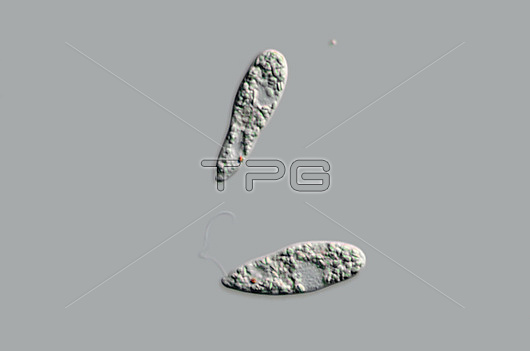
Heterotrophic Euglenoid protist, light micrograph. Euglenoids are unicellular freshwater algae with flagellate. Euglenoids have chloroplasts for photosynthesis. An experiment shows that Euglenoids can lose these chloroplasts under certain conditions. If an antibiotic such as streptomycin is added to the culture medium of Euglenoids, chloroplast division is inhibited, while cell division remains unaffected. During successive divisions, chloroplasts are distributed throughout the daughter cells, but with each successive generation, there are fewer and fewer of them, as they can no longer divide. After a certain number of cell divisions, the daughter cells no longer contain chloroplasts. They thus become solely heterotrophic and behave like animal cells. They are spindle-shaped, with a single flagellum. Their length is generally between 30 and 70 micrometres, and their width between 6 and 18 micrometres. Magnification: x450 when printed at 10 centimetres wide.
| px | px | dpi | = | cm | x | cm | = | MB |
Details
Creative#:
TOP30268452
Source:
達志影像
Authorization Type:
RM
Release Information:
須由TPG 完整授權
Model Release:
N/A
Property Release:
N/A
Right to Privacy:
No
Same folder images:

 Loading
Loading